
On Writing, Editing, and Publishing
Jacques Barzun
Telling About Society
Howard S. Becker
Tricks of the Trade
Howard S. Becker
Writing for Social Scientists
Howard S. Becker
What Editors Want
Philippa J. Benson and Susan C. Silver
Permissions, A Survival Guide
Susan M. Bielstein
The Craft of Translation
John Biguenet and Rainer Schulte, editors
The Craft of Research
Wayne C. Booth, Gregory G. Colomb, and Joseph M. Williams
The Dramatic Writers Companion
Will Dunne
Glossary of Typesetting Terms
Richard Eckersley, Richard Angstadt, Charles M. Ellerston, Richard Hendel, Naomi B. Pascal, and Anita Walker Scott
Writing Ethnographic Fieldnotes
Robert M. Emerson, Rachel I. Fretz, and Linda L. Shaw
Legal Writing in Plain English
Bryan A. Garner
From Dissertation to Book
William Germano
Getting It Published
William Germano
Writing Science in Plain English
Anne E. Greene
The Craft of Scientific Communication
Joseph E. Harmon and Alan G. Gross
Storycraft
Jack Hart
A Poets Guide to Poetry
Mary Kinzie
The Chicago Guide to Collaborative Ethnography
Luke Eric Lassiter
Cite Right
Charles Lipson
How to Write a BA Thesis
Charles Lipson
The Chicago Guide to Writing about Multivariate Analysis
Jane E. Miller
The Chicago Guide to Writing about Numbers
Jane E. Miller
Mapping It Out
Mark Monmonier
The Chicago Guide to Communicating Science
Scott L. Montgomery
Indexing Books
Nancy C. Mulvany
Developmental Editing
Scott Norton
Getting into Print
Walter W. Powell
The Subversive Copy Editor
Carol Fisher Saller
A Manual for Writers of Research Papers, Theses, and Dissertations
Kate L. Turabian
Students Guide for Writing College Papers
Kate L. Turabian
Tales of the Field
John Van Maanen
Style
Joseph M. Williams
A Handbook of Biological Illustration
Frances W. Zweifel
Bryan A. Garner is president of LawProse, Inc., and Distinguished Research Professor of Law at Southern Methodist University.
The University of Chicago Press, Chicago 60637
The University of Chicago Press, Ltd., London
2001, 2013 by Bryan A. Garner
All rights reserved. Published 2013.
Printed in the United States of America
22 21 20 19 18 17 16 15 14 131 2 3 4 5
ISBN-13: 978-0-226-28393-7 (paper)
ISBN-13: 978-0-226-03139-2 (e-book)
Library of Congress Cataloging-in-Publication Data
Garner, Bryan A., author.
Legal writing in plain English : a text with exercises / Bryan A. Garner. Second edition.
pages cm. (Chicago guides to writing, editing, and publishing)
Includes index.
ISBN 978-0-226-28393-7 (paperback : alkaline paper) ISBN 978-0-226-03139-2 (e-book)
1. Legal composition. I. Title. II. Series: Chicago guides to writing, editing, and publishing.
KF250.G373 2013
808.06634dc23
2012045006
 This paper meets the requirements of ANSI/NISO Z39.48-1992 (Permanence of Paper).
This paper meets the requirements of ANSI/NISO Z39.48-1992 (Permanence of Paper).
OTHER BOOKS WRITTEN OR EDITED BY BRYAN A. GARNER
Garners Modern American Usage
Garners Dictionary of Legal Usage
Blacks Law Dictionary (all editions since 1996)
Garner on Language and Writing (foreword by Justice Ruth Bader Ginsburg)
Reading Law: The Interpretation of Legal Texts (with Justice Antonin Scalia)
Making Your Case: The Art of Persuading Judges (with Justice Antonin Scalia)
The Redbook: A Manual on Legal Style
The Elements of Legal Style
The Chicago Manual of Style, chap. 5, Grammar and Usage (15th & 16th eds.)
The Winning Brief
The Winning Oral Argument
Ethical Communications for Lawyers
Securities Disclosure in Plain English
Guidelines for Drafting and Editing Court Rules
A New Miscellany-at-Law by Sir Robert Megarry
The Oxford Dictionary of American Usage and Style
The Rules of Golf in Plain English (with Jeffrey Kuhn)
The HBR Guide to Better Business Writing
A Handbook of Basic Legal Terms
A Handbook of Business Law Terms
A Handbook of Criminal Law Terms
A Handbook of Family Law Terms
Texas, Our Texas: Remembrances of the University
For my beloved daughter
ALEXANDRA BESS GARNER
CONTENTS
This book takes a practical approach to legal writing. It derives from my experience over the past several decades in working with law students andin far greater numberspracticing lawyers and judges. So the book is intended not just for law students and paralegals but also for practitionerseven experienced ones. In devising the exercises for each section, I envisioned either a writing class or an informal group of legal writers who meet periodically to work through the book.
Particularly in its approach to exercises, the book differs markedly from other legal-writing texts. Each of the 50 sections contains a basic, an intermediate, and an advanced exercise. (Model answers for the basic exercises are in the back of the book.) Some of these exercises are open-ended, requiring you to supply examples of particular writing problems. This simply means that youll have to pay some attention to style in your legal reading. Other exercises require you to research the literature on effective writing. Why? Because as professional writers, lawyers should know this literature. After all, workaday questions about writing are generally much easier to answer than the legal questions that arise in practicing law. If you worry about points of grammar and usage, see . Better yet, make friends with the nearest librarian. Librarians are there to help you, and theyre generally eager to do it.
The books organization reflects the different types of writing that lawyers do. Some techniques apply to virtually all legal writing ( ).
Much of the advice in this book depends onand even promotessound legal analysis. That might not be what people expect from a book on legal writing. Yet many sections are essentially about thinking straight. This is crucial, since its impossible to separate good writing from clear thinking.
Here youll find discussed and illustrated the primary techniques for improving your writing style. Some sections will serve only as reminders of what youve heard before but perhaps forgotten. Other techniques will probably be new to you. What matters most, in the end, is how you apply sound practices in your writing. Youll have to use good judgment. No blackletter rule can substitute for that.
Finally, a word about plain English. The phrase certainly shouldnt connote drab and dreary language. Actually, plain English is typically quite interesting to read. Its robust and directthe opposite of gaudy, pretentious language. You achieve plain English when you use the simplest, most straightforward way of expressing an idea. You can still choose interesting words. But youll avoid fancy ones that have everyday replacements meaning precisely the same thing.
I hope that youll enjoy and profit from the book. The examples are drawn from all practice areas, and the exercises are practical and realistic. If you can handle them capably, youre quite a legal writer. If not, keep working. This book is meant to offer both help and hope.
Next page

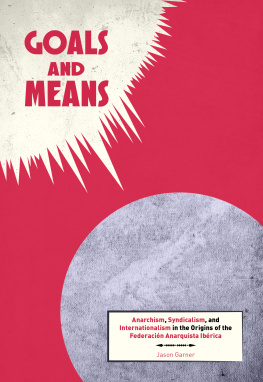
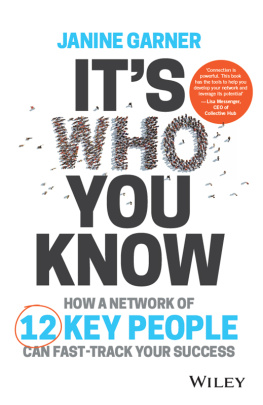
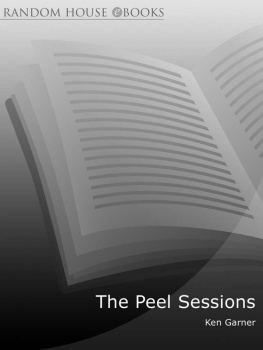
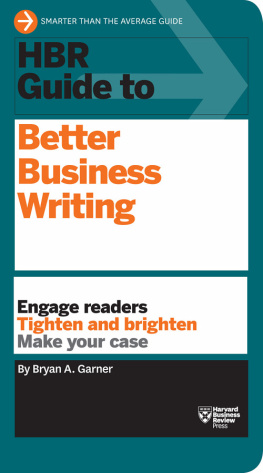



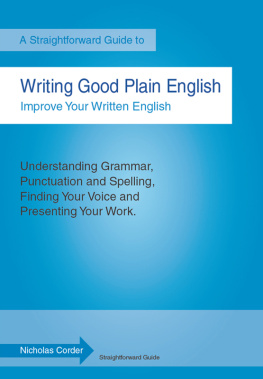
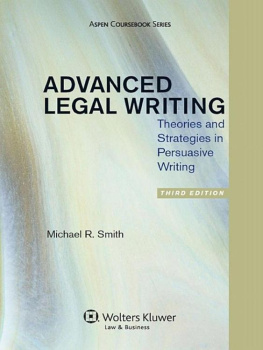
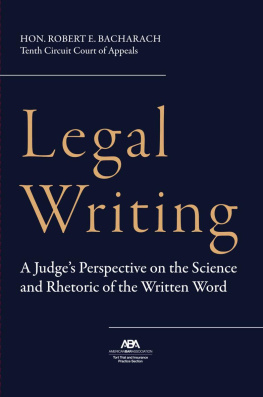
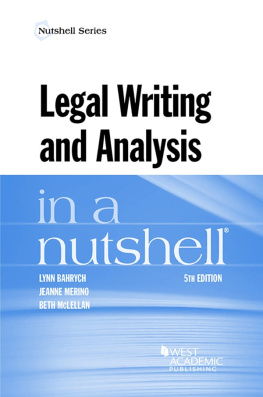
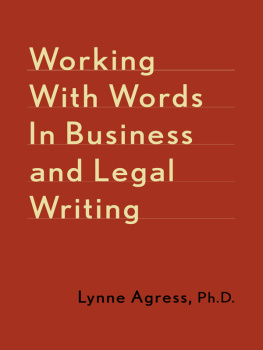
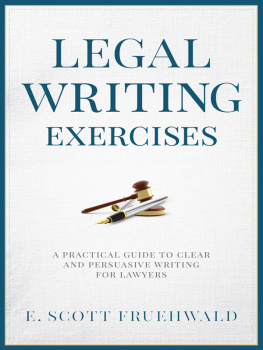
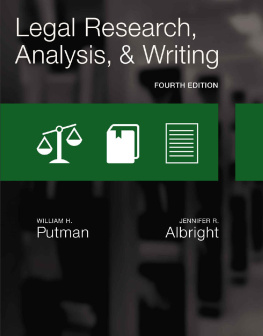
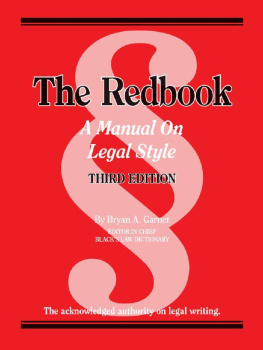

 This paper meets the requirements of ANSI/NISO Z39.48-1992 (Permanence of Paper).
This paper meets the requirements of ANSI/NISO Z39.48-1992 (Permanence of Paper).